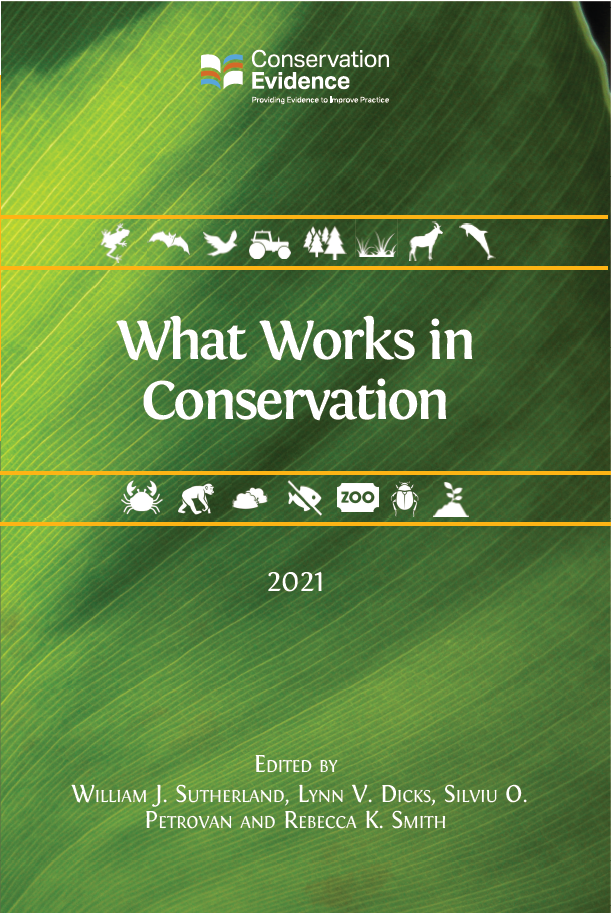Influence of mesh size and tooth spacing on the proportion of damaged organisms in the catches of the Portuguese clam dredge fishery
-
Published source details
Gaspar M. (2002) Influence of mesh size and tooth spacing on the proportion of damaged organisms in the catches of the Portuguese clam dredge fishery. ICES Journal of Marine Science, 59, 1228-1236.
Published source details Gaspar M. (2002) Influence of mesh size and tooth spacing on the proportion of damaged organisms in the catches of the Portuguese clam dredge fishery. ICES Journal of Marine Science, 59, 1228-1236.
Actions
This study is summarised as evidence for the following.
| Action | Category | |
|---|---|---|
|
Modify the design of dredges Action Link |
|
-
Modify the design of dredges
A replicated, controlled study in 1999 in one area of sandy seabed in the North Atlantic Ocean, off northwestern Portugal (Gaspar et al. 2002a) found that modifying dredge tooth spacing did not reduce the proportion of damaged or dead individuals (unwanted catch and escapees) for either the overall combined invertebrate and fish community or for crabs. The proportions of individuals in the overall community that entered the dredge and were damaged or dead were similar using a 2 cm (damaged: 3–5%, dead: 1–1.5%), 4 cm (damaged: 3–4%, dead: 0–1%) or 6 cm (damaged: 4–8%, dead: 1%) tooth spacing design. The proportions of crabs that were damaged or dead were similar using a 2 cm (damaged: 8–25%, dead: 4–11%), 4 cm (damaged: 7–19%, dead: 1–9%) or 6 cm (damaged: 7–29%, dead:1–20%) tooth spacing design. Three tooth-spacing designs (2, 4 and 6 cm) were compared. In July, two bivalve dredges with different designs were towed simultaneously side-by-side at 8–10 m depth (three tows/design; 15 min/tow). A net bag was fitted to the end of each dredge to retain the caught organisms that would otherwise escape through the dredge mesh. For each dredge design, catches were sorted by species group, counted and given a score of 1–5 according to the amount of damage (1 = good condition, 5 = crushed/dead). The effect of tooth spacing was examined for the overall unwanted community (invertebrates and fish) and for crabs.
A replicated, controlled study in 1999 in one area of sandy seabed in the North Atlantic Ocean, off northwestern Portugal (Gaspar et al. 2002b) found that modifying the net mesh size on a dredge did not reduce the proportion of damaged or dead individuals (unwanted catch and escapees) for either the overall combined invertebrate and fish community or for crabs. The proportions of individuals in the overall community that entered the dredge and were damaged or dead were similar using a 35 mm (damaged: 3–8%, dead: 1%), 40 mm (damaged: 4–5%, dead: 1%) or 50 mm (damaged: 3–5%, dead: 0–1.5%) mesh size design. The proportions of crabs that were damaged or dead were similar using a 35 mm (damaged: 8–24%, dead: 4–20%), 40 mm (damaged: 10–29%, dead: 5–8%), or 50 mm mesh size design (damaged: 7–25%, dead: 1–11%). Three mesh sizes (35 mm, 40 mm and 50 mm) were compared. In July, two bivalve dredges with different designs were towed simultaneously side-by-side at 8–10 m depth (three tows/design; 15 min/tow). A net bag was fitted to the end of each dredge to retain the caught organisms that would otherwise escape through the dredge mesh. For each dredge design, catches were sorted by species group, counted and given a score of 1–5 according to the amount of damage (1 = good condition, 5 = crushed/dead). The effect of mesh size was examined for the overall unwanted community (invertebrates and fish) and for crabs.
A replicated, controlled study in 1999 in one area of sandy seabed in the North Atlantic Ocean, off northwestern Portugal (Gaspar et al. 2002c) found that modifying the tooth spacing and net mesh size on dredge did not reduce the proportion of damaged or dead individuals (unwanted catch and escapees) for either the overall combined invertebrate and fish community or for crabs. The proportions of individuals in the overall community that entered the dredge and were damaged or dead were similar for the nine designs tested (damaged: 3–8%, dead: 0–1.5%). The proportions of crabs that were damaged or dead were similar for the nine designs tested (damaged: 7–29%, dead: 1–20%). Nine combinations of three mesh sizes (35, 40 and 50 mm) and three tooth-spacings (2, 4 and 6 cm) were compared. In July, two bivalve dredges with different designs were towed simultaneously side-by-side at 8–10 m depth (three tows/design; 15 min/tow). A net bag was fitted to the end of each dredge to retain the caught organisms that would otherwise escape through the dredge mesh. For each dredge design, catches were sorted by species group, counted and given a score of 1–5 according to the amount of damage (1 = good condition, 5 = crushed/dead). The effect of mesh size was examined for the overall community (invertebrates and fish) and for crabs.
(Summarised by: Anaëlle Lemasson & Laura Pettit)
Output references
|
|





)_2023.JPG)














